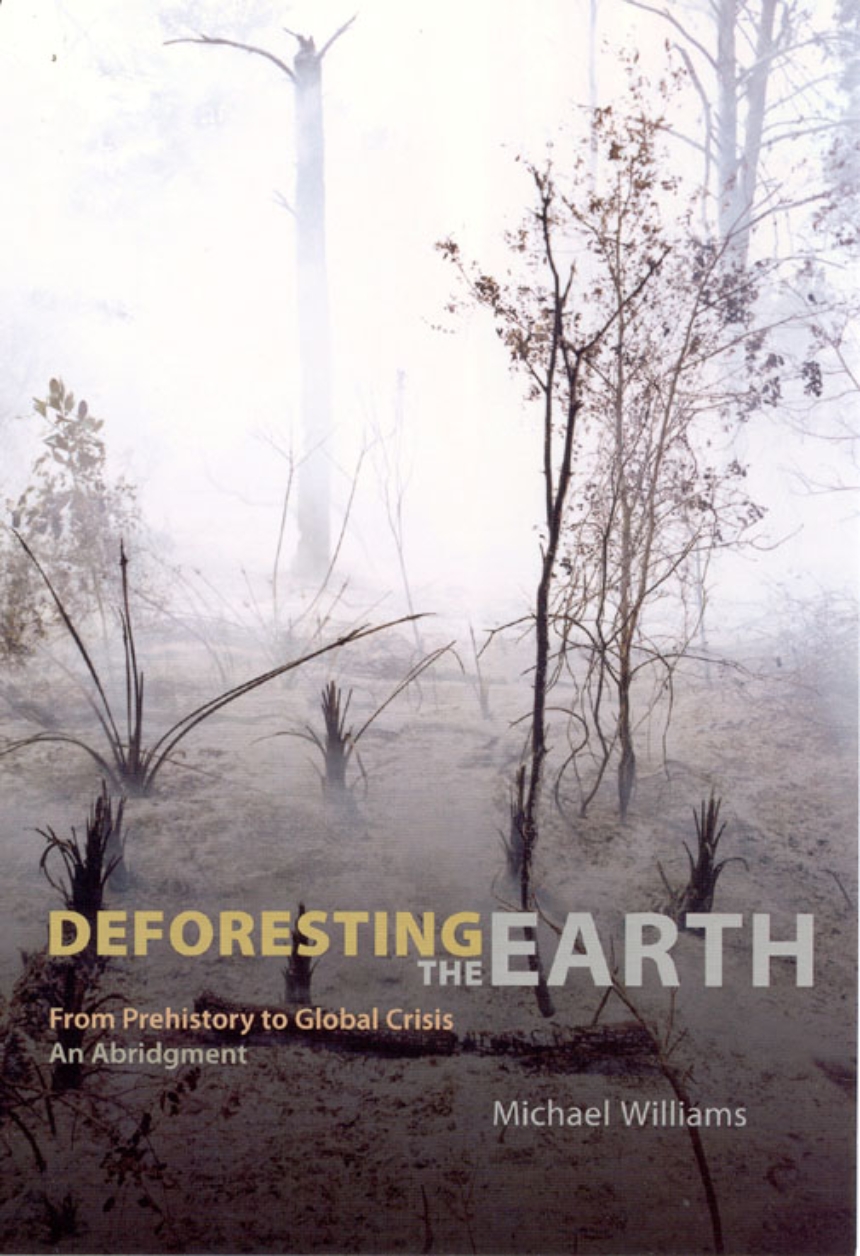Deforesting the Earth
From Prehistory to Global Crisis, An Abridgment
Abridged
9780226899473
9780226899053
Deforesting the Earth
From Prehistory to Global Crisis, An Abridgment
Abridged
“Anyone who doubts the power of history to inform the present should read this closely argued and sweeping survey. This is rich, timely, and sobering historical fare written in a measured, non-sensationalist style by a master of his craft. One only hopes (almost certainly vainly) that today’s policymakers take its lessons to heart.”—Brian Fagan, Los Angeles Times
Published in 2002, Deforesting the Earth was a landmark study of the history and geography of deforestation. Now available as an abridgment, this edition retains the breadth of the original while rendering its arguments accessible to a general readership.
Deforestation—the thinning, changing, and wholesale clearing of forests for fuel, shelter, and agriculture—is among the most important ways humans have transformed the environment. Surveying ten thousand years to trace human-induced deforestation’s effect on economies, societies, and landscapes around the world, Deforesting the Earth is the preeminent history of this process and its consequences.
Beginning with the return of the forests after the ice age to Europe, North America, and the tropics, Michael Williams traces the impact of human-set fires for gathering and hunting, land clearing for agriculture, and other activities from the Paleolithic age through the classical world and the medieval period. He then focuses on forest clearing both within Europe and by European imperialists and industrialists abroad, from the 1500s to the early 1900s, in such places as the New World, India, and Latin America, and considers indigenous clearing in India, China, and Japan. Finally, he covers the current alarming escalation of deforestation, with our ever-increasing human population placing a potentially unsupportable burden on the world’s forests.
Published in 2002, Deforesting the Earth was a landmark study of the history and geography of deforestation. Now available as an abridgment, this edition retains the breadth of the original while rendering its arguments accessible to a general readership.
Deforestation—the thinning, changing, and wholesale clearing of forests for fuel, shelter, and agriculture—is among the most important ways humans have transformed the environment. Surveying ten thousand years to trace human-induced deforestation’s effect on economies, societies, and landscapes around the world, Deforesting the Earth is the preeminent history of this process and its consequences.
Beginning with the return of the forests after the ice age to Europe, North America, and the tropics, Michael Williams traces the impact of human-set fires for gathering and hunting, land clearing for agriculture, and other activities from the Paleolithic age through the classical world and the medieval period. He then focuses on forest clearing both within Europe and by European imperialists and industrialists abroad, from the 1500s to the early 1900s, in such places as the New World, India, and Latin America, and considers indigenous clearing in India, China, and Japan. Finally, he covers the current alarming escalation of deforestation, with our ever-increasing human population placing a potentially unsupportable burden on the world’s forests.
561 pages | 33 halftones, 97 line drawings, 29 tables | 6 x 9 | © 2006
Biological Sciences: Botany, Conservation, Natural History
Earth Sciences: Environment, General Earth Sciences
Geography: Environmental Geography
History: General History
Reviews
Table of Contents
List of Illustrations
List of Tables
Preface
PART I - CLEARING IN THE DEEP PAST
1. The Return of the Forest
2. Fire and Foragers
3. The First Farmers
4. The Classical World
5. The Medieval World
PART II - REACHING OUT: EUROPE AND THE WIDER WORLD
6. Driving Forces and Cultural Climates, 1500–1750
7. Clearing in Europe, 1500–1750
8. The Wider World, 1500–1750
9. Driving Forces and Cultural Climates, 1750–1900
10. Clearing in the Temperate World, 1750–1920
11. Clearing in the Tropical World, 1750–1920
PART III - THE GLOBAL FOREST
12. Scares and Solutions, 1900–1944
13. The Great Onslaught, 1945–95: Dimensions of Change
14. The Great Onslaught, 1945–95: Patterns of Change
Epilogue: Backward and Forward Glances
Acknowledgments
List of Measures, Abbreviations, and Acronyms
Notes
Bibliographic Essay
Index
List of Tables
Preface
PART I - CLEARING IN THE DEEP PAST
1. The Return of the Forest
2. Fire and Foragers
3. The First Farmers
4. The Classical World
5. The Medieval World
PART II - REACHING OUT: EUROPE AND THE WIDER WORLD
6. Driving Forces and Cultural Climates, 1500–1750
7. Clearing in Europe, 1500–1750
8. The Wider World, 1500–1750
9. Driving Forces and Cultural Climates, 1750–1900
10. Clearing in the Temperate World, 1750–1920
11. Clearing in the Tropical World, 1750–1920
PART III - THE GLOBAL FOREST
12. Scares and Solutions, 1900–1944
13. The Great Onslaught, 1945–95: Dimensions of Change
14. The Great Onslaught, 1945–95: Patterns of Change
Epilogue: Backward and Forward Glances
Acknowledgments
List of Measures, Abbreviations, and Acronyms
Notes
Bibliographic Essay
Index
